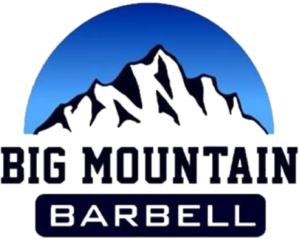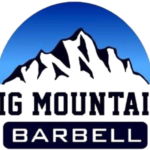Strength training is essential for building muscle, increasing endurance, and improving overall athletic performance. However, without proper mobility and joint stability, athletes risk injuries that can hinder progress. At Big Mountain Barbell in Salt Lake City, we understand the importance of combining Physio Remedy PT with strength training to optimize movement efficiency, reduce injury risks, and improve performance for weightlifters, powerlifters, and athletes of all levels.
Why Mobility Matters in Strength Training
Mobility is often overlooked in strength training, yet it plays a crucial role in lifting mechanics, range of motion, and joint stability. Athletes who focus solely on lifting heavy without addressing mobility issues may experience stiffness, restricted movement, and increased injury risks over time.
The Connection Between Mobility and Strength
✔ Enhances range of motion (ROM): Better mobility allows athletes to perform movements with a full range of motion, maximizing strength potential.
✔ Reduces compensatory movements: When mobility is restricted, the body compensates by shifting load to weaker areas, leading to poor movement patterns and injury.
✔ Supports long-term performance: Flexible and mobile joints withstand the demands of high-intensity training, reducing wear and tear.
Mobility training isn’t just for beginners—advanced lifters and competitive athletes rely on Physio Remedy PT to maintain peak performance.
How Physio Remedy PT Enhances Strength Training
Physio Remedy PT is designed to improve movement quality, restore mobility, and prevent injuries by addressing muscle imbalances, joint restrictions, and postural issues. Strength training combined with physical therapy creates a comprehensive approach to athletic development.
1. Improving Joint Stability for Better Lifting Mechanics
Lifters often experience weak or unstable joints, particularly in the knees, shoulders, and hips. This instability can cause compensatory movement patterns, leading to discomfort or strain.
Physio Remedy PT incorporates stability drills to:
✔ Strengthen small stabilizing muscles around major joints
✔ Improve balance and neuromuscular coordination
✔ Reinforce proper lifting mechanics for squats, deadlifts, and presses
For example, powerlifters with weak knee stability may struggle with knee valgus (collapsing inward) during squats. Corrective exercises like banded squats and single-leg stability drills can enhance knee strength and prevent injuries.
2. Increasing Flexibility for Optimal Movement Efficiency
Tight muscles can restrict movement and limit strength gains. Physio Remedy PT uses targeted flexibility training to:
✔ Improve hip and shoulder mobility for deep squats and overhead presses
✔ Release tight hamstrings, quads, and hip flexors that limit lower body power
✔ Prevent lower back strain by improving spinal flexibility and core stability
For instance, a tight thoracic spine can limit an athlete’s ability to maintain a neutral back position during deadlifts. Mobility drills such as thoracic spine rotations and foam rolling help restore movement, reducing compensation and preventing injuries.
3. Addressing Muscle Imbalances to Prevent Injuries
Muscle imbalances occur when certain muscle groups become overactive while others weaken, leading to poor posture and inefficient movement. Physio Remedy PT identifies and corrects these imbalances by:
✔ Strengthening weaker muscles that impact performance
✔ Releasing tight or overactive muscles through soft tissue therapy and stretching
✔ Re-educating movement patterns to ensure proper muscle activation
For example, athletes with weak glutes may over-rely on their lower back during squats and deadlifts, increasing the risk of lumbar strain. Glute activation drills like banded clamshells and hip thrusts correct this imbalance, allowing for better form and power generation.
4. Enhancing Recovery for Consistent Training
Recovery is just as important as training. Without proper rest and recovery strategies, athletes experience fatigue, soreness, and higher injury risks. Physio Remedy PT supports faster recovery through:
✔ Soft tissue work (massage therapy, foam rolling, and myofascial release)
✔ Active recovery exercises to reduce stiffness and enhance blood circulation
✔ Mobility drills to keep joints moving efficiently between workouts
Athletes who integrate prehab (preventative rehab) techniques experience less downtime due to injuries, allowing for consistent and progressive training.
Common Strength Training Issues Physio Remedy PT Can Fix
Many lifters and athletes unknowingly deal with compromised movement patterns due to poor mobility or strength imbalances. Some common problems include:
| Issue | Cause | Physio Remedy PT Solution |
| Shoulder pain during bench press | Weak scapular stability | Rotator cuff strengthening, scapular mobility drills |
| Hip tightness in squats | Limited hip mobility, tight hip flexors | Hip mobility exercises, deep squat drills |
| Knee pain during lunges | Weak glutes, poor knee alignment | Glute activation, stability drills |
| Lower back discomfort in deadlifts | Poor core engagement, tight hamstrings | Core stabilization, hamstring flexibility training |
| Limited ankle dorsiflexion in squats | Tight calves, weak ankle mobility | Ankle mobility drills, foam rolling |
By incorporating Physio Remedy PT into a training routine, lifters can break through plateaus, lift heavier, and move with greater efficiency.
Integrating Physio Remedy PT into Your Training Routine
Athletes of all levels can benefit from physical therapy, mobility work, and corrective exercises to support their strength training goals. Whether preparing for a competition, recovering from an injury, or looking to improve overall movement, integrating Physio Remedy PT into training is a game-changer.
At Big Mountain Barbell in Salt Lake City, our Physio Remedy PT services help athletes build strength while ensuring proper movement mechanics. Contact us at 801-200-3471 or request a quote to schedule an appointment today.





